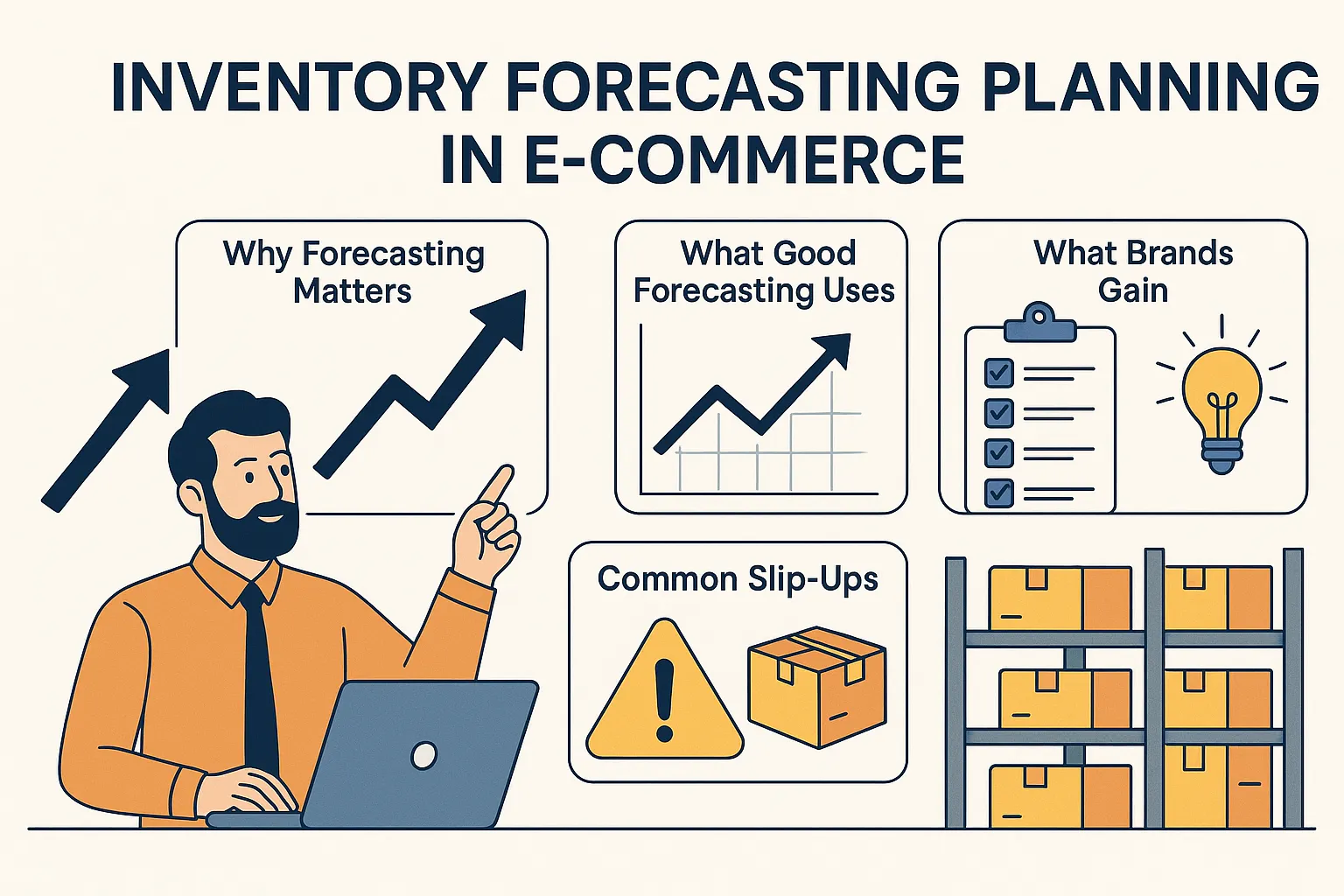- Perfality
- September 8, 2025
- 11:00 am
- Read Time: 5 mintues
Running an online shop sounds simple enough. You put products online, get sales, and ship them out. But anyone who has done it knows the real headache isn’t selling — it’s stock. Run out too soon, and customers walk away frustrated. Order too much, and your money just sits there, locked in shelves full of slow movers. That’s why inventory forecasting for e-commerce has become so important. It helps sellers plan ahead instead of playing catch-up.

Why Forecasting Matters
E-commerce doesn’t play by steady rules. One viral TikTok can clear out an item overnight. A random weekend promotion might double sales before you even realize it. Without planning, you’re either scrambling to reorder late or stuck paying storage fees for things that won’t move.
This is where ecommerce inventory forecasting makes all the difference. It uses past numbers, market signals, and promotions to give sellers a clearer idea of what’s coming. Holidays? No surprises if you know last year’s demand pattern. Planning ads? Much easier when inventory forecasting for e-commerce tells you which products can actually handle the push.
Think of it as replacing blind guesses with a working plan.

What Good Forecasting Uses
Smart ecommerce inventory forecasting doesn’t mean staring at endless spreadsheets. It mixes a few key inputs:
- Sales history — what happened last season or last year.
- Amazon forecast data — hints of what demand might look like.
- Supplier lead times — so you know when to restock.
- Your promo calendar — campaigns that will move extra units.
- Outside factors — shipping delays, competitor discounts, sudden market changes.
When you put all that together, inventory forecasting for e-commerce stops being theory. It turns into something you can act on.

What Brands Gain
Brands that actually use ecommerce inventory forecasting usually see results fast. Customers don’t keep seeing “out of stock.” Money isn’t stuck in products that won’t sell. Promotions run smoother, warehouses feel less chaotic, and ad spend works harder because it’s backed by data.
That’s why more sellers now treat inventory forecasting for e-commerce as a core part of growth, not just a background task.

Common Slip-Ups
Plenty of sellers still get this wrong. Some only check stock when it’s already too late. Others trust gut feeling instead of data. And a lot of people forget that ads or promotions can change demand instantly.
The result? Missed orders, wasted ad spend, and unhappy customers. Without ecommerce inventory forecasting, those problems pile up faster than you think.

How Perfality Fits In
At Perfality, we’ve seen both ends of the problem. Warehouses packed with goods no one is buying. And sellers who lose thousands because they couldn’t keep up with demand.
We set up systems for inventory forecasting for e-commerce that bring sales history, Amazon’s forecast data, and promotion calendars into one picture. Our goal is to make ecommerce inventory forecasting practical and easy, so instead of reacting late, brands stay one step ahead.

Final Word
Running an online shop without inventory forecasting for e-commerce is like driving without a fuel gauge. Sure, you’ll keep going for a while, but eventually you’ll stop dead in the middle of the road. With proper ecommerce inventory forecasting, sellers know when to reorder, when to slow down, and when to double down.
At Perfality, we help turn raw sales data into clear actions. That means less stress, fewer emergencies, and steady, predictable growth.






